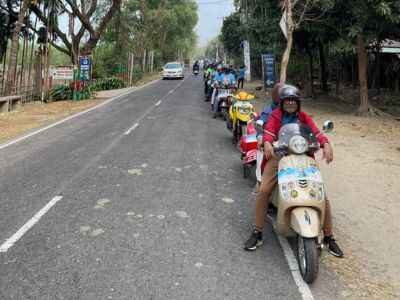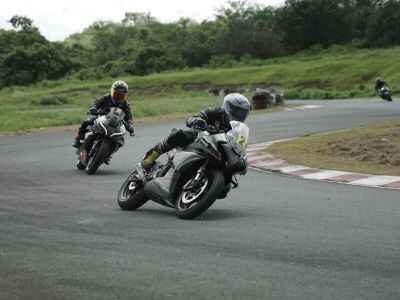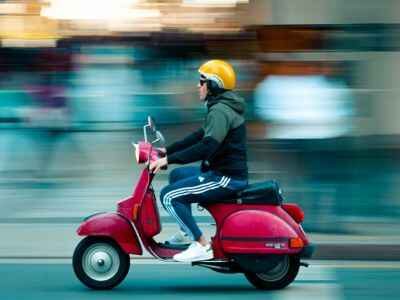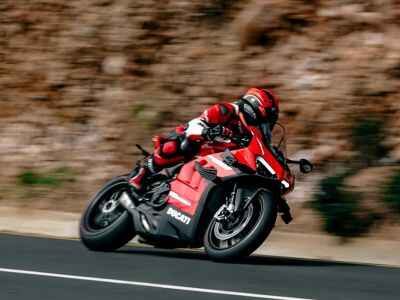Group motorcycle riding offers a unique blend of freedom, camaraderie, and shared adventure that solo riding simply can’t match. Whether you’re planning a weekend ride with friends or joining a large organized event, understanding proper formation riding techniques isn’t just about looking organized—it’s about creating a safer, more enjoyable experience for everyone involved.
According to the Motorcycle Safety Foundation, group riding requires special considerations and preparation beyond solo riding skills. Let’s explore the essential techniques that will help keep your group safe on the road.
Pre-Ride Planning: The Foundation of Safe Group Travel
The Essential Pre-Ride Meeting
Before any wheels turn, a comprehensive riders’ meeting sets the stage for safety. The American Motorcyclist Association recommends covering these critical elements:
- Complete route details with planned stops
- Formation expectations and spacing guidelines
- Group-specific hand signals
- Emergency procedures
- Contact information exchange
“The pre-ride meeting is non-negotiable,” says motorcycle safety instructor David Thompson. “This 15-minute investment prevents hours of confusion and potential hazards later.”
During this meeting, experienced group leaders should:
- Share route information through physical maps or digital navigation
- Identify riders with medical training
- Verify communication systems
- Establish a buddy system for accountability
- Assess rider experience for appropriate positioning
Strategic Rider Positioning
According to a study published in the Journal of Safety Research, rider positioning significantly impacts group safety. Optimal positioning includes:
Lead Rider
Experienced with the route, consistent in riding style, and skilled at communicating hazards.

Sweep Rider (Tail):
Another experienced rider who maintains the rear position, assists with lane changes, and ensures no one falls behind.

Newer Riders
Best positioned behind the lead rider where they can follow an established pace and be observed by others.

Powerful Motorcycles
Often better placed toward the rear to avoid fragmenting the group during acceleration.

Formation Fundamentals: Creating a Safe Riding Structure
The Staggered Formation Advantage
The National Highway Traffic Safety Administration recognizes the staggered formation as the standard for group riding on straight, open roads. In this configuration:
- The lead rider takes the left third of the lane
- The second rider follows approximately one second behind in the right third
- The third rider returns to the left position, and so on
This arrangement creates:
- Adequate space cushions for emergency maneuvers
- Improved forward visibility
- Greater reaction time to obstacles
- A compact group footprint that other vehicles recognize as a unit
Single-File Formation: When and Why
According to the Motorcycle Safety Foundation’s Guide to Group Riding, certain situations demand transitioning to single-file riding:
- Winding roads with limited visibility
- Narrow roads or construction zones
- Poor surface conditions requiring more maneuvering space
- Heavy traffic requiring frequent speed adjustments
- Entering or exiting highways
- Reduced visibility conditions
The transition between formations should be clearly signaled by the lead rider and understood by all group members before the ride begins.
Communication Systems: The Lifeline of Group Riding
Hand Signals: Your Primary Communication System
Even with today’s technology, hand signals remain the most reliable communication method for group rides. The Motorcycle Legal Foundation recommends mastering these essential signals:
Left Turn
Arm extended straight in left direction.

Right Turn
Arm extended straight in right direction.

Slowing Down
Arm extended downward with palm facing back, pumped several times.

Stop
Arm extended downward with palm facing back.

Road Hazard
Point with hand or foot toward the hazard side.

Single File
Arm raised with index finger extended upward.

Staggered Formation
Arm raised with index and middle fingers extended.

Fuel Stop Needed
Point to tank and extend number of fingers indicating miles/kilometers.
“Hand signals are your primary safety system,” emphasizes Officer James Chen, motorcycle patrol coordinator. “Electronic communications can fail, but as long as riders can see each other, these signals ensure critical information flows through the group.”

Electronic Communications: The Modern Supplement
While not replacing visual signals, electronic communication systems offer valuable supplementary benefits:
Bluetooth Headsets
Allow real-time conversation between riders within range (typically 500-900 meters).

Group Communication Apps
Enable GPS tracking and text notifications for longer distances
Helmet Cameras
Provide valuable documentation for post-ride analysis and training.

According to the Insurance Institute for Highway Safety, these technologies are particularly valuable for warning about hazards beyond visual range and maintaining contact when groups become separated.
Navigating Traffic Challenges as a Group
Executing Safe Lane Changes
Lane changes represent one of the most challenging maneuvers for motorcycle groups. The Motorcycle Safety Foundation recommends two approaches:
The Sequential Method (Safest for Larger Groups)
- The sweep rider moves first, securing the adjacent lane
- Each rider then changes lanes in sequence from back to front
- The lead rider moves last after confirming all riders have changed lanes
This approach ensures the new lane remains protected throughout the transition and prevents the group from being split by other traffic.
The Block Method (For Smaller Groups with Experienced Riders)
- The lead rider signals the intended lane change
- The sweep rider moves to block the new lane
- The entire group changes lanes simultaneously
- The sweep rider maintains position until all riders complete the change
“Lane changes are where inexperienced groups often fall apart,” notes Thompson. “Practice these maneuvers in light traffic before attempting them on busy highways.”
Navigating Intersections Safely
RideApart highlights that intersections present particular dangers for motorcycle groups:
- Right-of-Way Confusion: Other drivers may not understand that the entire group is traveling as a unit
- Pressure to Keep Up: Riders may rush through yellow lights unsafely to avoid separation
- Varied Stopping Distances: Different motorcycles require different distances to stop safely
Safe intersection practices include:
- Progressive Slowing: The lead rider begins slowing earlier than normal for signals
- No Assumptions: Each rider must independently verify intersection safety regardless of group movement
- Regrouping Points: Pre-establish locations to regroup if the formation gets separated
- Legal Compliance: Never run red lights to stay with the group
Highway Transitions: Critical Moments for Group Safety
Highway On/Off Ramps: Maintaining Cohesion
Highway entrances and exits represent critical transition points that require specialized group riding techniques. These high-speed merging zones demand precise coordination and altered formations to ensure safety.
Entrance Ramp Navigation
According to Cycle World, highway entrances require a methodical approach:
- Pre-Ramp Formation Change: Signal for single-file formation approximately 100 yards before the entrance ramp
- Spacing Increases: Extend following distance to 3-4 seconds between riders
- Individual Merging Assessment: Each rider must evaluate traffic and identify their own safe merging gap
- Full Acceleration Lane Usage: Utilize the entire acceleration lane to match highway speed
- Continuous Mirror Checks: Maintain awareness of surrounding riders’ positions
“Highway entrances demand a transition from group thinking to individual decision-making,” explains motorcycle safety instructor Michael Brennan. “Each rider needs space to focus on their own safe entry rather than just following the rider ahead.”
Exit Strategies for Groups
Highway exits require even more advance planning:
- Early Notification: Signal exit intentions at least one mile before the actual exit
- Progressive Lane Changes: Begin the process even earlier if multiple lane changes are needed
- Compact Formation: Maintain a tighter group during exit preparation to prevent separation
- Gradual Deceleration: Begin slowing before reaching the exit ramp
- Post-Exit Regrouping: Identify a safe location beyond the exit to reestablish proper formation
Emergency Exit Protocols
When a planned exit is missed or an emergency exit becomes necessary:
- Continue Forward: Never attempt U-turns or shoulder reversals to reach a missed exit
- Group Communication: Alert all riders via hand signals or communication systems about the situation
- Next Exit Default: Proceed calmly to the next available exit, even if it significantly alters the planned route
- Regroup Location: The lead rider should identify a safe stopping point beyond the next exit
- Route Recalculation: Use the regrouping stop to recalculate the route and ensure all riders understand the new plan
“The most dangerous thing any rider can do is make a desperate attempt to take a missed exit,” warns Thompson. “I’ve investigated multiple serious accidents caused by last-second exit attempts. The minor inconvenience of taking the next exit is insignificant compared to the risks of emergency maneuvers at highway speeds.”
Special Consideration: Cloverleaf Interchanges
Cloverleaf interchanges present unique challenges for group riding:
- Extreme Vigilance: Be particularly alert for vehicles entering the highway from the connecting entrance ramp
- Speed Differential Awareness: Adjust for the significant speed differences between exiting and continuing traffic
- Cornering Adjustments: Be prepared for decreasing-radius turns common in cloverleaf designs
- Surface Condition Changes: Watch for debris, gravel, or reduced maintenance on ramp surfaces
- Signage Verification: Different interchanges may have exit signs positioned differently; confirm directions early
Mastering these highway transition techniques is essential for smooth, safe group travel on expressways and interstates. With proper execution, a motorcycle group can navigate these challenging zones while maintaining both safety and relative cohesion.
Passing Slower Vehicles: Calculated Movements
When the group needs to pass slower traffic:
- The lead rider should only initiate passing when there’s space for the entire group
- Each rider is responsible for their own passing decision
- If conditions change, remaining riders should abort rather than rush
- The lead rider should moderate speed after passing to allow the group to reconvene
Special Situations in Group Riding
Weather Adaptations
According to WebBikeWorld, different weather conditions require formation adjustments:
Rain
Increase following distance by an additional second; consider single file.

High Winds
Widen the staggered formation to allow for wind buffeting.
Limited Visibility
Reduce speed and increase spacing; use running lights.

Extreme Heat
Schedule more frequent stops to prevent heat exhaustion.
Night Riding Considerations
The Motorcycle Safety Foundation notes that night riding amplifies group riding challenges:
- Increased Following Distance: Add at least one additional second between riders
- High Visibility Gear: Ensure all riders wear reflective elements
- Headlight Patterns: Staggered formation creates a distinctive light pattern visible to other drivers
- Reduced Speed: Allow extra time for hazard identification and response
Emergency Protocols for Group Rides
Mechanical Failure Response
When a rider experiences mechanical issues, RevZilla recommends this approach:
- The affected rider should signal and safely move to the roadside
- The sweep rider stops to assist
- The group either finds a safe stopping point ahead or continues to the next planned stop
- Communications systems alert the group to the situation
“Never leave a rider alone with a disabled motorcycle,” emphasizes experienced group leader Susan Rodriguez. “At minimum, the sweep rider should remain until help arrives.”
Accident Response Procedures
If an accident occurs, the Motorcycle Legal Foundation advises:
- The nearest riders should stop to assist while others secure the scene
- Designate specific people for:
- Calling emergency services
- Directing traffic around the scene
- Attending to injured riders
- Communicating with the rest of the group
- Gather witness information and documentation
- Contact emergency contacts from the pre-ride information exchange
Group Size Considerations
Finding the Optimal Balance
According to Motorcycle Consumer News, group size significantly impacts safety:
- Ideal Size: 5-7 motorcycles per sub-group
- Maximum Recommended: 12 motorcycles before splitting into sub-groups
- Sub-Group Spacing: Maintain approximately 1/4 mile between sub-groups
Larger groups should consider:
- Appointing middle leaders to maintain formation integrity
- Using more frequent regroup points
- Employing additional communication systems
- Assigning specific roles (navigator, traffic spotter) to distribute responsibilities
Passenger Considerations in Group Riding
The Rider-Passenger Partnership
The Motorcycle Safety Foundation emphasizes that carrying passengers adds complexity to group riding:
- Pre-Ride Briefing: Ensure passengers understand group riding basics and hand signals
- Communication System: Establish clear communication between rider and passenger
- Positioning Adjustments: Motorcycles with passengers often work best in the middle of the formation
- Loading Considerations: Remember that passengers affect acceleration, braking, and handling
“Passengers play a crucial role in group dynamics,” notes Thompson. “They can serve as additional observers for hazards and help maintain group communication.”
Developing Your Group Riding Skills
Practice Makes Perfect
The American Motorcyclist Association recommends progressive skill development:
- Parking Lot Practice: Empty lots provide safe environments to practice formations and transitions
- Regular Signal Drills: Practice ensures signals become second nature
- Emergency Scenario Simulations: Rehearse responses to common emergencies
- Graduated Complexity: Begin with small groups on familiar roads before attempting challenging routes
Many motorcycle training organizations now offer specialized group riding courses covering these elements in controlled environments.
Etiquette and Group Culture
Building a Safety-First Mentality
According to Cycle World, the culture within a riding group has a significant impact on safety:
- Ego Management: Create an environment where safety suggestions are welcomed, not seen as criticism
- No-Rider-Left-Behind Philosophy: Establish clear expectations that the group stays together
- Regular Feedback Sessions: Hold post-ride discussions about what worked well and what could improve
- Mentor Relationships: Pair less experienced riders with veterans for coaching
“The safest groups are those where every member feels responsible for everyone else’s safety,” explains Thompson. “This collective mindset creates a powerful safety culture that transcends any single technique.”
Conclusion: The Rewards of Masterful Group Riding
Group motorcycle riding combines the freedom of two wheels with the joy of shared experience. When approached with proper preparation, clear communication, and disciplined execution, it can be both exhilarating and safe.
The most successful group rides occur when every participant understands their dual responsibility: to themselves and to the group. Each rider must maintain their own safety margin while contributing to the collective safety of the formation.
By mastering the techniques outlined here—from staggered formations to emergency protocols—riders can enjoy the unique satisfaction of motorcycles moving in harmony while significantly reducing the risks inherent in group travel. The road becomes not just a path to a destination, but a shared journey enjoyed with fellow enthusiasts, creating memories and experiences that solo riding simply cannot match.
For more information on group riding safety, check out the Motorcycle Safety Foundation’s comprehensive guide and consider taking a specialized training course through organizations like the American Motorcyclist Association.
Remember that group riding skills, like all motorcycle abilities, improve with practice and mindful attention. Each ride presents opportunities to refine techniques, strengthen group cohesion, and enhance the safety practices that make group motorcycle travel one of the most rewarding experiences on two wheels.


